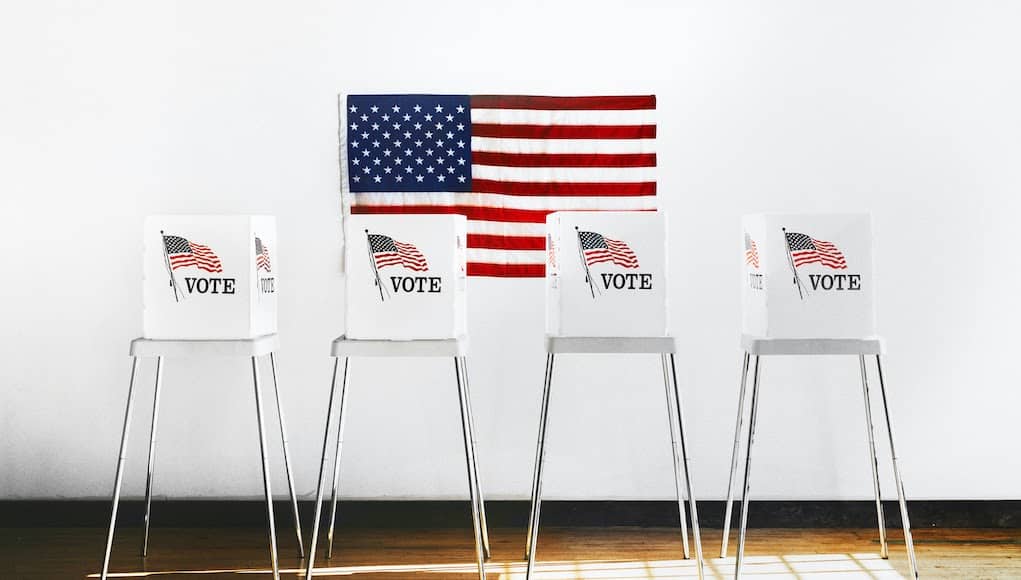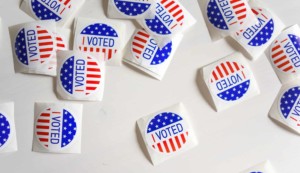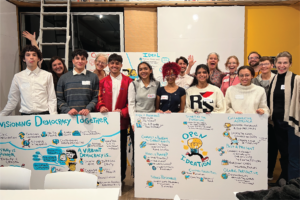Civics for 2020: This Is How to Engage Future Voters

By: Kristen Thorson & Erin Gohl
Civics education is often cited as a foundational intent of the public education system across the United States. Educational reform for generations has included the goal of producing a more engaged citizenry. Popular sentiments center around the opinion that a well-informed voter is an integral piece to having a healthy, active, informed democracy. But clarity on what our communities—whether defined as national, state or school district communities—expect students and teachers to do is lacking. With the growth of testing-based accountability systems, focused on reading and math, civics education has not received the time, resources, or outcome reporting to support the declarations of importance. Specifically, classroom teachers are given very little, if any, civics-related curricular resources or support that connects civics with contemporary events.
With the 2020 Presidential election on the horizon, educators have an opportunity to utilize current events as an onramp for discussion and engagement. Students are listening to a myriad of ads, news stories, and interviews dissecting the candidates, policies, and implications of the process and issues in the 2020 presidential race. And they are being informally taught whether to be engaged or apathetic based on how their immediate community of family and school is responding. Many students are interested in understanding all that they are hearing because of the style of the ads; others are interested because of the issues being addressed. Some are interested because they hear conflicting statements. Schools and families should commit to helping them navigate what they are hearing and provide models for how to be an active, engaged voter and citizen.
Conversations by Age: Preschool
Preschoolers are not too young to engage in conversations about elections or the electoral process. They hear those around them talking about it. They see and hear political advertisements on streaming services, radio or television. And it is natural for them to be curious about what they are seeing and hearing. At times they spontaneously assert perspectives they have heard from family or media. The challenge is finding developmentally- and age-appropriate ways to teach the concepts involved.
Preschoolers have opinions and can understand the basics of the voting process. There are choices, each adult gets to express what they want with a vote, and the option with the most votes wins. Giving preschoolers an opportunity to experience the voting process firsthand facilitates a much deeper understanding of the electoral process, but must be done in a way that is personally meaningful to them. And to a three or four-year-old, what they have for their snack, or who gets to be line-leader, is very meaningful! Teachers can set up an election in their classroom between snack choices, including rounds of primaries if time allows, letting students explain why they prefer a particular choice, and then inviting them to cast their ballot. Students then actually eat the winning choice. Experiencing the voting process in such a tangible way allows for an understanding that voting can make a difference in one’s own life and provides a springboard for additional conversations at home.
Resources:
- Brightly has curated this book list to guide conversations with young children about voting and elections.
- These videos from Sesame Street discuss what the word “vote” means and what happens on an election day.
Conversations by Age: Elementary School
In elementary school, students are ready to learn more about how our government works generally and the voting process specifically. They can begin to understand the unique roles of federal, state, and local governments, the roles of political parties and the primary election process, and the culmination of the general election. Examining campaign material leads to conversations on a candidate’s background—whether it be their political experience, business acumen, or other ways they have contributed to their local, state, national or global community—as well as their proposed policies. This process helps students understand the realities of limited choices and the relationships between issues, parties, and candidates.
Most importantly, elementary students can work to build the necessary skills of an informed voter, useful even outside of an election. They can work to develop research skills, to consider multiple viewpoints, and ultimately, develop their own voice through debate and other constructive conversations within the classroom. Teachers might select a topic that allows for competing and valid arguments. Have students individually or in groups investigate the background information on the topic, use evidence to create an argument, and ultimately carry out a verbal dialogue or debate on the topic. Part of the lesson is in having students learn to clearly articulate their opinions, listening to others with respect and an open mind, and thoughtfully responding in a civil manner. Embedded in this process, teachers can guide students to listen to contrary opinions and respond with “Tell me more.” or “Why do you think that?” in an effort to encourage openness even in disagreement. Seeking to understand, rather than judge, reflects a significant social-emotional maturity.
Resources:
- For grades 4-6, Scholastic has compiled these resources to teach kids about how the government works.
- Scholastic has created this preK-8 book list that works to teach readers about elections.
Conversations by Age: Middle and High School
At the very youngest, middle and high school students are only 6 years away from being active voters themselves. They are ready to dive much more deeply into the specifics and complexities of the election. They are developmentally ready and able to read and watch contemporary news stories about the election; to research the nuances of policies and understand the connection to both global and personal impacts; and to explore their own belief systems and how they align with different candidates alongside the adults around them.
In middle and high school, conversations and learning experiences should facilitate students’ ability to assess and understand whether stories and reports they are hearing reflect facts or subjective opinions. We must prepare them to be active and engaged citizens.
The potential for learning experiences is expansive at this age band. Questions around the electoral college, campaign finance, polling information, and specific policy issues can play out through research projects, debates, and even mock elections. Students at this age should be able to draw on historical precedent and make applications to contemporary questions of public policy. A key piece of these lessons is ensuring that students develop skills to have these courageous conversations through thoughtful analysis and debate, while still ensuring a dynamic that is respectful of all involved.
Resources:
- This website from C-SPAN Classroom includes resources explaining different aspects of the presidential election process including information on the candidates, political parties, the process, and key issues.
- This Ted Talk, created by Fordham University Political Science Professor Christina Greer explains the electoral college to students.
- This website from PBS Education provides a broad swath of resources and tools for teachers and students on the electoral process, ways to encourage civic engagement, and guidance on ways to explore these issues in the classroom.
- PocketPolls, a free App by TSH, LLC, tracks the latest polls for the 2020 presidential primaries, general election, and presidential approval ratings.
Supporting Civics Education at Home
Parents have the opportunity to be role models for civic engagement as well. Encourage families to model respectful dialogue about political issues in the home and share relevant resources for them to learn more about policy issues and ways to talk about them with their children. Remind families that their children are their own individuals with thoughts and opinions and should have the space to share their thoughts. And, on Election Day, having parents take their children with them to the polls can be one of the most powerful lessons of being an engaged citizen.
Resources:
- The League of Women Voters supports a VOTE411 to provide information on the voting process and ballots in communities across the United States
- This website from Scholastic provides tips for families to talk about the election and electoral process.
The Stakes are High
Given the contentious nature of our current social political context, exploring political issues and processes with classroom students from a variety of backgrounds can seem daunting. But, though it may sound hyperbolic, the future of our democracy really does depend on us doing this important work. The 2020 presidential election does not just provide an opportunity for exploring these concepts. This election year can engage students in deeper learning about multi-dimensional, multi-perspective issues. It is this experience that is a requisite component of the public education our students should be receiving in civics. Teaching our students the importance of voting, how to really evaluate the policy implications of a particular stance, and how to work and collaborate with others who might disagree with them to find a common ground is how we ensure the health of our political institutions in the future. A presidential election only occurs every four years. What we do during this cycle of civic practice will set the tone for these future voters for years to come.
For more, see:
- Engaging Students with the Values of Democracy
- Civic Education: Can Games Make the Grade?
- The “Great Game” of Teaching History
Stay in-the-know with innovations in learning by signing up for the weekly Smart Update.
This post includes mentions of a Getting Smart partner. For a full list of partners, affiliate organizations and all other disclosures, please see our Partner page.






0 Comments
Leave a Comment
Your email address will not be published. All fields are required.